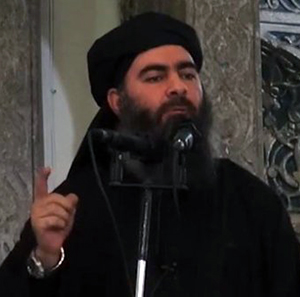London, Nov 4: Islamic State's reclusive chief Abu Bakr al-Baghdadi has escaped from the terrorist group's stronghold of Mosul as the Iraqi Army advanced for a final assault, British foreign secretary Boris Johnson said today.
He said western intelligence sources believe Baghdadi is no longer in Mosul, The Guardian reported.
Baghdadi yesterday broke his year-long silence and issued an audio recording, urging his jihadists to continue their fight to the end in Mosul, where he was believed to be hiding.
Johnson, in an unusual reference to intelligence, said Baghdadi's audio recording was "cruelly ironic since some of the intelligence we have suggests he had himself vacated the scene and is yet using internet media to encourage others to take part in violence."
The battle for Mosul was expected to end in a decisive defeat for the terrorist group, but Baghdadi's escape is likely to complicate matters for Iraqi and coalition forces.
Johnson said the recapture of Mosul, in the face of IS's "scorched earth campaign", would take time and represented "the coalition's greatest challenge", according to the report.
If Baghdadi, who surprised the world by establishing the caliphate after capturing Mosul in June 2014, were to be killed, IS would have to choose a new caliph, but no successor would have the authority and prestige of the reclusive leader.
There is widespread concern that, despite a year of planning, there is little agreement among the many ethnic groups in the region on the future political structure of Mosul or the surrounding Nineveh province.
Giving an update to British parliament on the fight against IS, Johnson also said efforts were under way to prevent sectarian violence being unleashed as the group was ousted from Mosul and surrounding towns such as Tal Afar.
He said 30,000 civilians had fled the city and the UN had plans in place for as many as 90,000 refugees. But he accepted there were also reports that citizens would be used as human shields to raise the human cost of Iraqi Army incursions deeper into the city.
Mosul is a multi-ethnic city, but the large Sunni population is fearful that liberation will lead to massacres by Shia militias determined to take reprisals against those who collaborated with IS.
The anti-IS offensive is dependent on US-led air strikes and the presence of US special forces.





Comments
No strange, where he will escape, his God fathers
Israel,americans taken him to their HQ for their next target.
But all things observed by one for final justice.
Long Live Mankind.
Add new comment